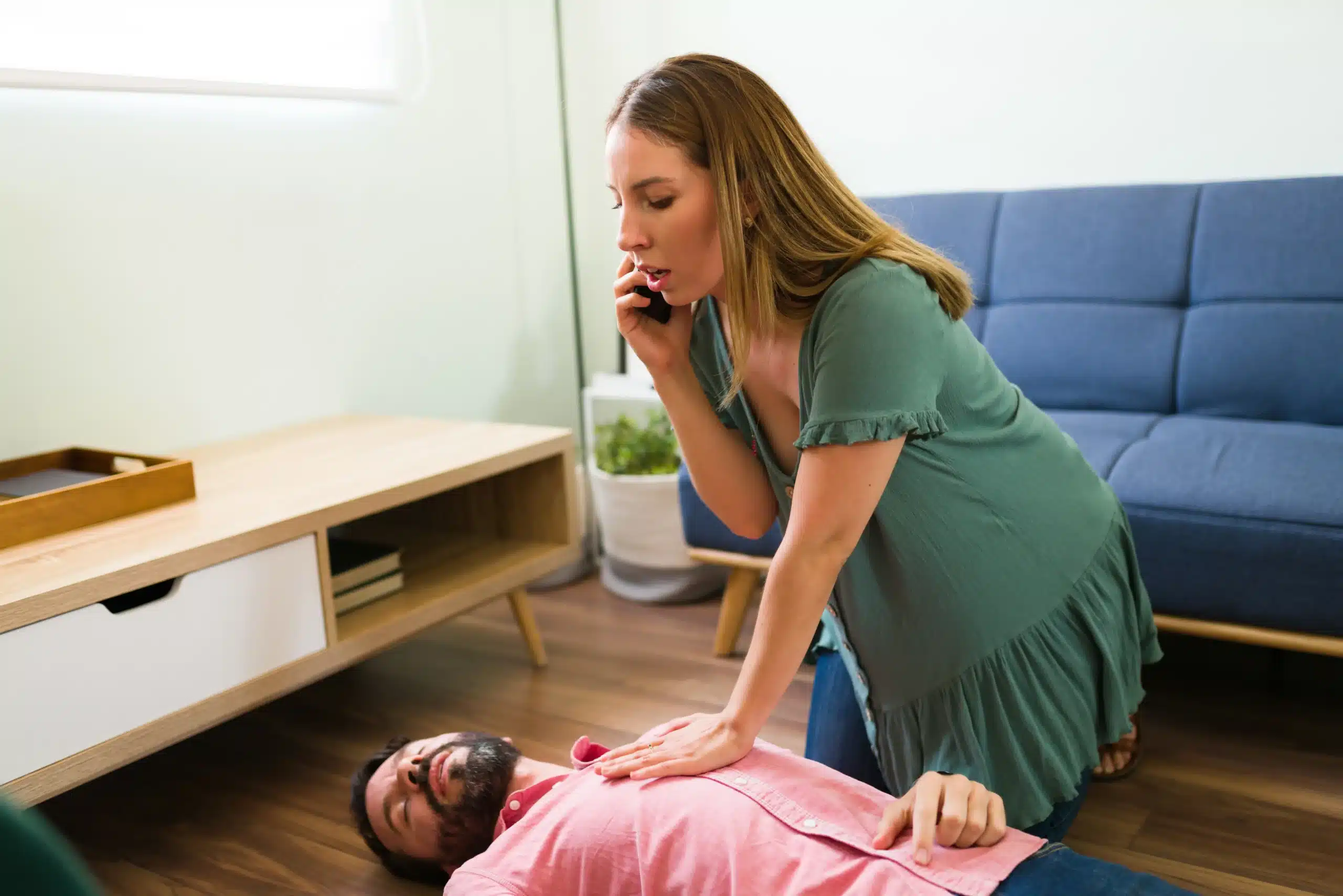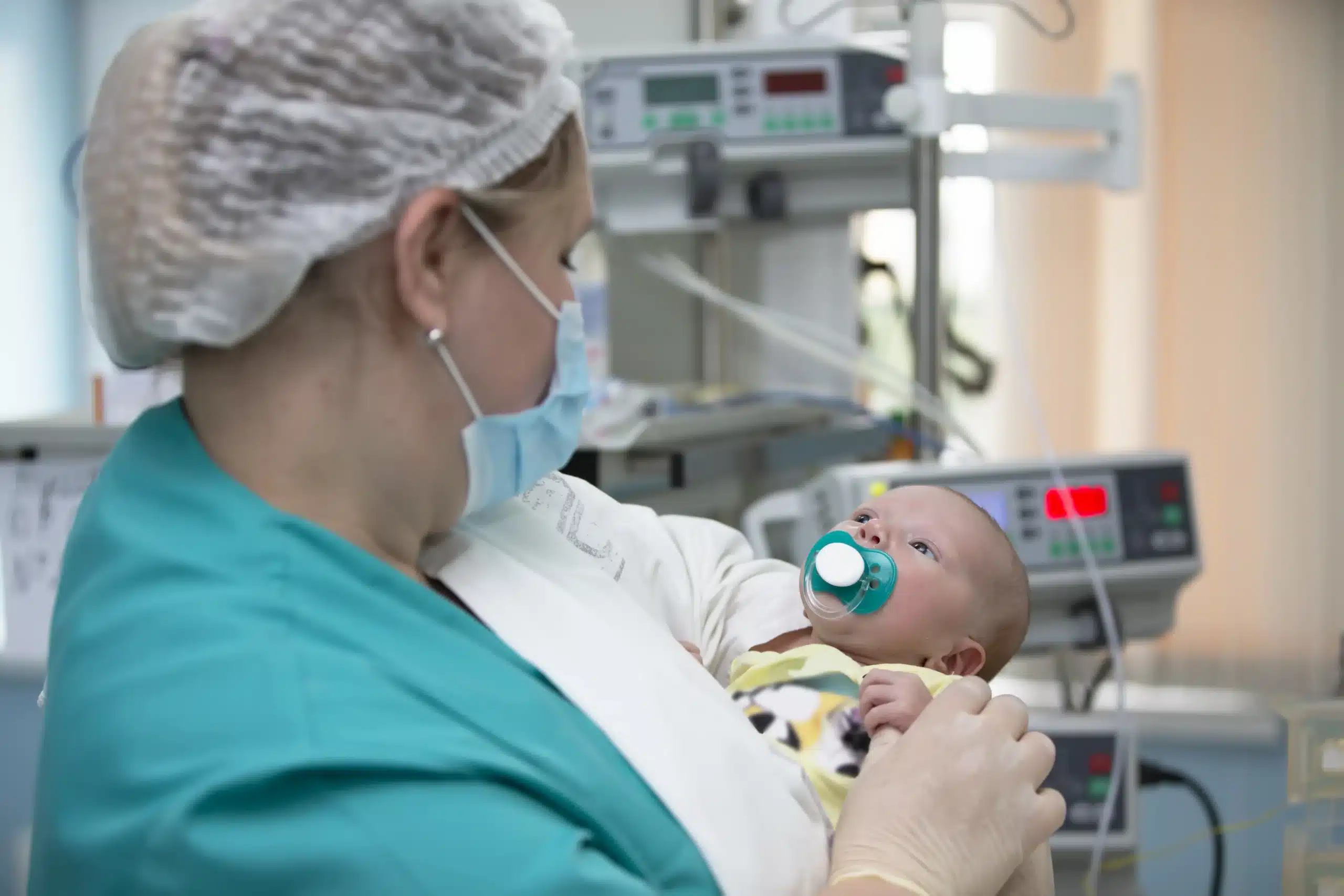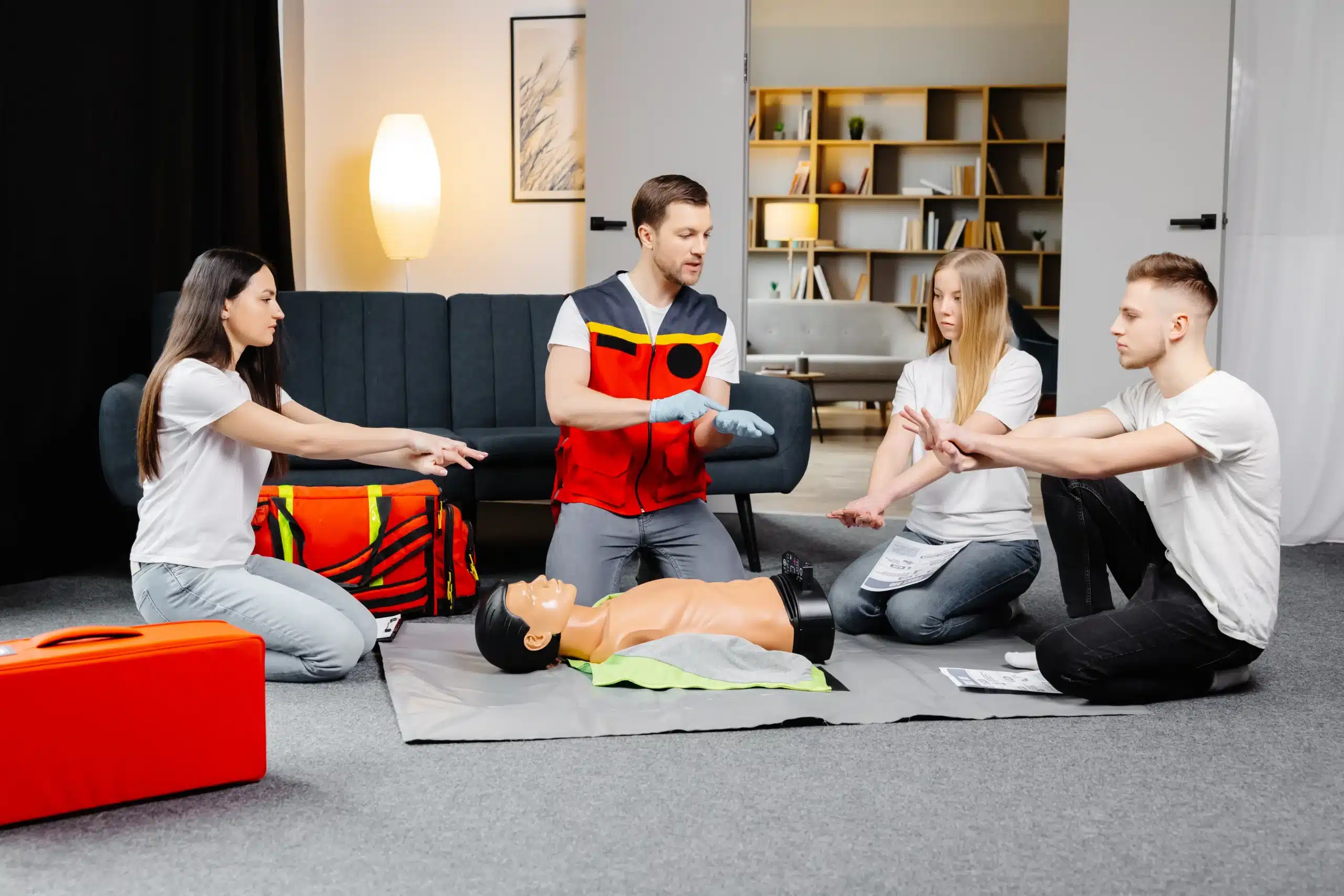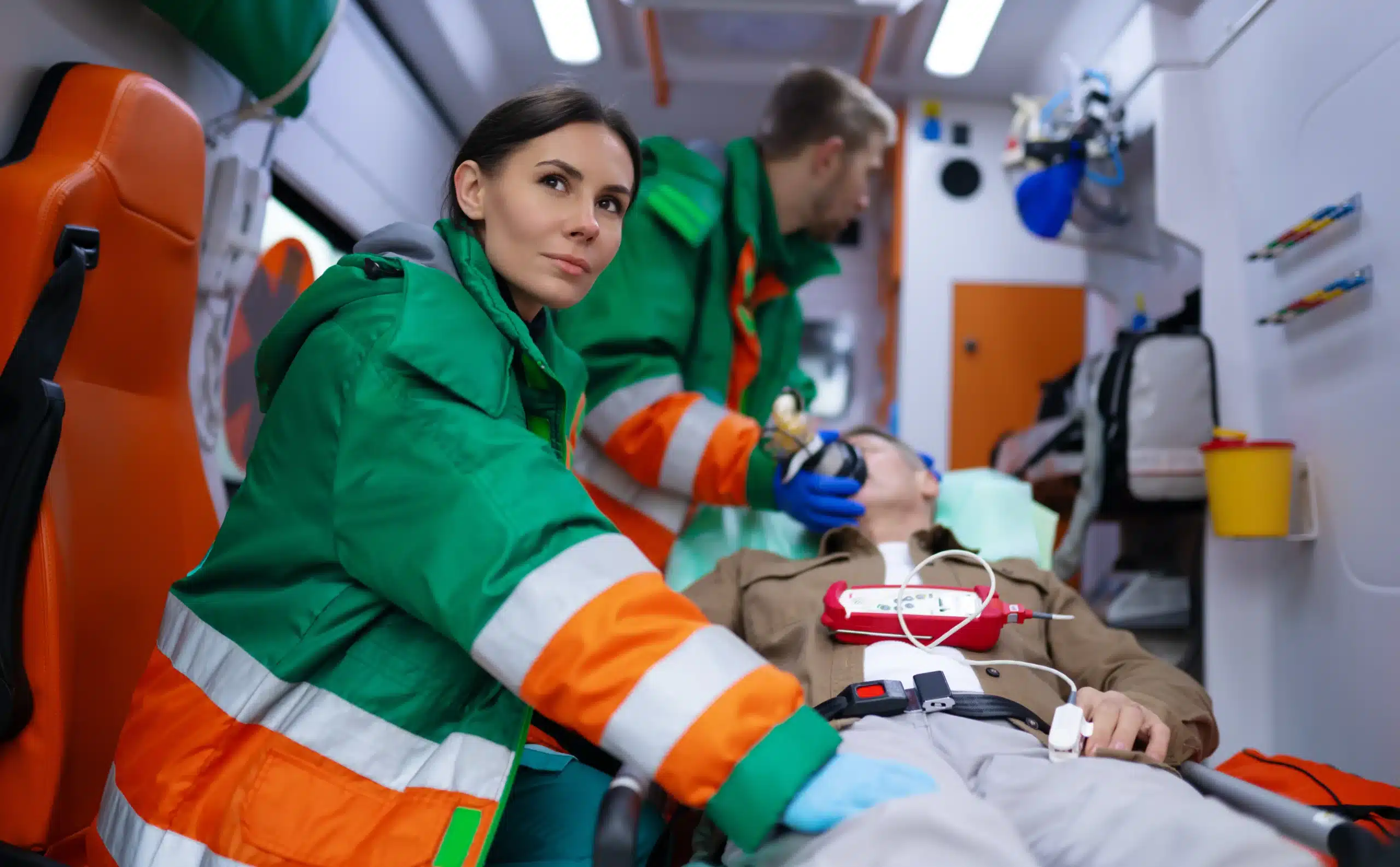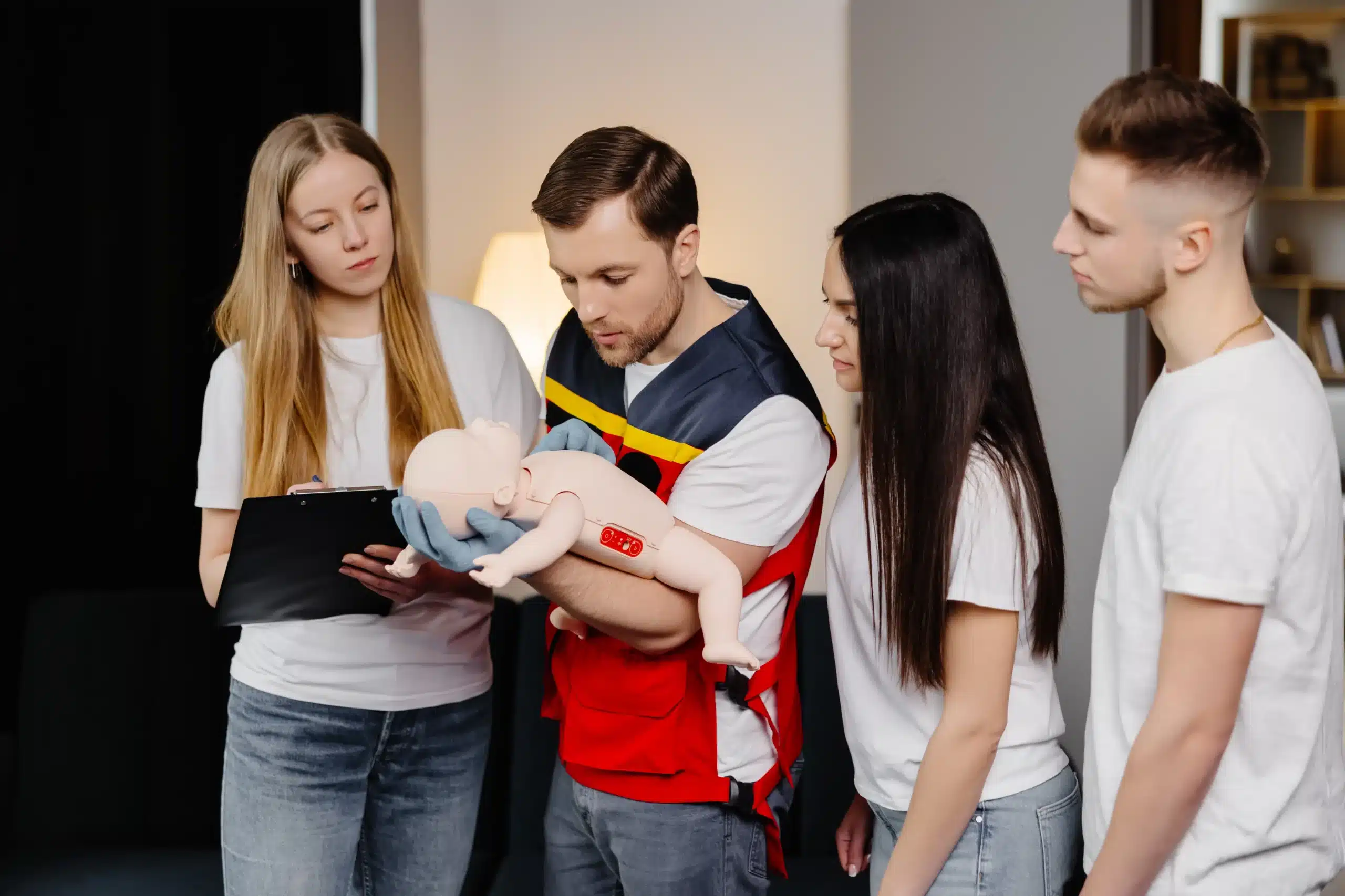As a healthcare provider, staying current with your certifications is non-negotiable, right? It’s not just about checking a box; it’s about being equipped to handle emergencies with confidence and provide the best possible care. One of the most fundamental certifications is Basic Life Support (BLS), and if you’re searching for “BLS renewal near me,” you’re in the right place. This guide breaks down everything you need to know about BLS renewal, from understanding the requirements and finding the right course to maximizing the value of your recertification. We’ll explore different learning formats, discuss costs, and offer tips for a smooth renewal process. Let’s get started!
Key Takeaways
- BLS renewal keeps your skills sharp: Staying up-to-date with the latest guidelines ensures you’re prepared to provide effective care in emergencies. Regularly renewing your certification demonstrates a commitment to patient safety and professional standards.
- Choosing the right course format is key: Consider your learning style and schedule when deciding between online, in-person, or hybrid BLS renewal courses. Each format offers unique benefits, so find what works best for you.
- BLS renewal is a worthwhile investment: While cost is a factor, view recertification as an investment in your career and the well-being of those you serve. Look for discounts and compare providers to maximize the value of your training.
What is BLS Renewal?
Basic Life Support (BLS) renewal is how healthcare professionals and other certified individuals refresh their skills and knowledge. It keeps them prepared to respond effectively in emergencies. BLS certification is typically valid for two years. Renewing before it lapses is essential for staying compliant with workplace standards and ensuring you’re ready to provide life-saving care.
What is BLS & Why Renew?
BLS, or Basic Life Support, equips healthcare providers and public safety professionals with essential life-saving protocols and skills. The American Red Cross explains that BLS training meets various certification and licensing requirements. The training covers core skills like CPR, recognizing and responding to life-threatening emergencies, using an AED, and relieving choking. Renewing your BLS certification is vital for staying up-to-date with the latest guidelines and techniques in emergency care. Medical practices and recommendations evolve, so regular training ensures you remain proficient and confident in performing these interventions.
Common BLS Renewal Misconceptions
Several myths around BLS renewal can discourage people from getting certified or renewing. One common misconception is that BLS certification is a one-time thing. Many assume they don’t need to renew after initial certification. However, BLS certification must be renewed every two years to remain valid, as resources like Medtigo point out. This ensures your skills are current and aligned with the latest best practices. Another misconception? That BLS certification is too expensive. In reality, the cost of BLS training is a small price to pay for the ability to save a life. The long-term benefits far outweigh the initial investment. American Health Training addresses another concern: some worry about the time commitment, but many courses are designed to be efficient and fit busy schedules. These misconceptions can create gaps in knowledge and preparedness, so understanding the importance of BLS renewal and how the process actually works is critical.
Find the Best BLS Renewal Courses Near You
Finding the right BLS renewal course involves a little research to ensure it aligns with your needs and learning style. This section breaks down key factors to consider when evaluating providers and choosing the best format for you. If you’re in the San Mateo, Daly City, or Millbrae area, be sure to check out Safety Training Seminars for convenient and affordable options.
Evaluate Local Providers
Start your search by exploring providers in your area. Look for established organizations with experienced instructors and positive reviews. Check if the provider offers courses approved by a nationally recognized organization like the American Heart Association (AHA) or the American Red Cross. A convenient location and flexible scheduling are also important factors. For those in San Mateo, Daly City, and Millbrae, Safety Training Seminars offers various courses, including BLS, ACLS, and CPR/First Aid, with a low price guarantee. Remember, choosing a local provider often means more personalized attention and support. For example, providers like Sav-A-Heart offer renewal courses taught by local instructors, often including a written exam and skills evaluation, ensuring you receive comprehensive training. You can find more information on their BLS renewal course on their website.
Online vs. In-Person: Pros & Cons
Deciding between online and in-person BLS renewal depends on your learning preferences and schedule. Online BLS renewal offers flexibility, allowing you to learn at your own pace. It’s often a more affordable option, too. However, in-person classes provide hands-on practice and direct interaction with an instructor, which can be beneficial for solidifying skills and asking questions. The American Red Cross highlights the value of in-person training for mastering these essential lifesaving techniques. Consider which format best suits your learning style and how you prefer to interact with the material.
Top BLS Renewal Providers
Several reputable organizations offer high-quality BLS renewal courses. Here are a few to explore:
American Heart Association (AHA)
The AHA is a well-respected organization known for its comprehensive BLS training programs, offering various courses, including online and in-person options. They are a leading authority in CPR and emergency cardiovascular care.
American Red Cross
The American Red Cross is another trusted provider of BLS renewal courses. They offer both online and in-person classes, making it convenient to find a format that works for you. Their focus on workplace safety training makes them a reliable choice.
Safety Training Seminars
Safety Training Seminars provides various BLS courses tailored to healthcare professionals and organizations.
National Safety Council
The National Safety Council offers comprehensive training programs, including BLS certification and renewal. They are a recognized leader in safety training and resources.
ProTrainings
ProTrainings offers a range of online BLS renewal courses designed to be flexible and convenient. Their online platform makes renewing your certification easy and accessible.
HeartCode
HeartCode provides a blended learning approach, combining online coursework with hands-on skills practice. This hybrid approach offers a balance of flexibility and practical application.
HealthForce Training Center
HealthForce Training Center offers AHA-approved BLS renewal courses focused on essential life-saving skills. Their alignment with AHA guidelines ensures high-quality training.
BLS Renewal Costs
Getting recertified in Basic Life Support (BLS) doesn’t have to break the bank. Understanding the factors that influence BLS renewal costs helps you budget effectively and find the best value. Let’s explore the typical price ranges, what can impact cost, and how to maximize your investment.
Average Prices for Different Formats
BLS renewal course prices typically hover around $75, not including the manual. If you need a replacement manual, expect to add about $20 to that cost. Prices can vary based on location, the training provider, and the course format (online, in-person, or blended learning). Safety Training Seminars offers a low-price guarantee, ensuring you receive high-quality training at a competitive rate. They also offer ACLS courses for advanced cardiovascular life support training.
Factors Affecting Cost
Several factors can influence the final price of your BLS renewal. Some providers include the cost of the manual in their course fee, while others offer it as a separate purchase. Location can also play a role, as prices may differ between urban and rural areas or among various states. The type of course format—online, in-person, or a hybrid approach—can also affect the overall cost. Online BLS renewal often provides flexibility and convenience.
Value vs. Investment
While cost is a valid consideration, think of BLS renewal as an investment in your skills and career. This training equips you with the knowledge and confidence to respond effectively in medical emergencies. Maintaining your BLS certification demonstrates your commitment to patient safety and can be a requirement for many healthcare roles. Consider the long-term benefits and the potential to make a real difference—the value far outweighs the upfront cost.
Discounts and Promotions
Look for opportunities to save on your BLS renewal. Many providers offer discounts on training materials or free shipping promotions. Group discounts might also be available if you’re renewing with colleagues. Check with your employer to see if they offer any reimbursement programs for professional development courses like BLS renewal. Combining your CPR and First Aid certification can sometimes lead to cost savings as well. It’s always a good idea to inquire directly with the training provider about any current discounts or promotions they may be running. For healthcare providers seeking efficient renewal options, consider exploring RQI programs.
BLS Renewal Prerequisites
Before signing up for your BLS renewal course, take a look at the requirements. Knowing the process ahead of time makes registering and completing your recertification that much easier.
Current Certification Status
A current BLS certification is the most important prerequisite for renewal. Make sure your Basic Life Support certification is current or has only recently expired (within the last 30 days) before attempting to renew. This ensures you’re already familiar with the most recent life support practices and guidelines, as established by organizations like the American Red Cross.
Required Documentation & Time
Keep your current BLS provider card handy—you’ll need it to register for your renewal course. American Heart Association (AHA) BLS certifications are typically valid for two years. You have a 30-day grace period after expiration to renew your BLS certification without starting from scratch. The renewal process involves choosing a course (online or in-person), completing the coursework, passing an exam, and receiving your updated provider card.
Prepare for Your Renewal Course
Even if you’re a seasoned BLS provider, refreshing your knowledge before your renewal course is always a good idea. Review the course materials thoroughly, whether you choose an online BLS renewal course or in-person training. Take practice tests and use any available study aids to ensure you’re ready for the assessment and can receive your updated certification promptly. Solid preparation will help you feel confident and prepared for any emergency.
Choose the Right BLS Renewal Format
Renewing your BLS certification involves a few choices. Understanding the different formats—online, in-person, and hybrid—can help you find the best fit for your schedule and learning style. Let’s break down the pros and cons of each.
Online Courses
Online BLS renewal courses offer unmatched flexibility. You can work through the material at your own pace, fitting the training around your busy schedule. Many online courses, like those from Safety Training Seminars, present information in engaging formats, including videos and interactive exercises. This approach can be great for visual learners or those who prefer self-directed study. One potential drawback is the lack of hands-on practice during the initial learning phase. While some programs may require a later skills check, the online portion is primarily theoretical. If you value immediate feedback and hands-on learning, consider supplementing your online coursework with additional practice.
In-Person Training
In-person BLS renewal provides hands-on learning and direct interaction with an instructor. You’ll practice skills in real-time, receive immediate feedback, and have the opportunity to ask questions. This format is ideal for kinesthetic learners who benefit from physical practice and prefer a structured learning environment. Safety Training Seminars offers in-person training in San Mateo and over 60 other cities, providing convenient options. The primary consideration for in-person classes is the set time commitment, which might be challenging for those with demanding schedules. However, the focused learning environment and direct interaction can make in-person training a worthwhile investment.
Hybrid Options
Hybrid BLS renewal courses combine online learning with in-person skills sessions. You’ll complete a portion of the coursework online, enjoying the flexibility of self-paced learning, and then attend an in-person session to practice techniques and receive personalized instruction. This format offers a balance of convenience and hands-on experience, appealing to those who want some flexibility without sacrificing practical training. Organizations like the American Red Cross offer this blended approach. While hybrid courses offer more flexibility than traditional in-person classes, they still require some in-person attendance, so factor travel time and scheduling into your decision. Consider a hybrid course if you value both convenience and the benefits of hands-on learning.
Maximize Your BLS Renewal Value
Getting your BLS recertified is an investment in your career and the safety of those around you. Here’s how to make the most of your BLS renewal:
Group Enrollment & Early Registration
Registering early for your BLS renewal, especially with a group, often unlocks discounts. Many training centers, like Safety Training Seminars, offer reduced rates for group enrollments. This can be a smart option for workplaces or groups of friends renewing together. Plus, early registration guarantees your spot and gives you ample time to prepare. Completing the online BLS certification course helps build a strong understanding of the material and develop the skills to respond effectively in emergencies.
Compare Provider Offerings
Not all BLS renewal courses are the same. Take the time to compare what different providers offer. Look at the course content, format (online, in-person, or blended), and the total cost. Consider your learning style and schedule. Some providers, like the American Red Cross, offer both online and in-person options, allowing flexibility. Finding the right fit ensures you get the most out of your renewal. Actively engaging with the course materials and preparing for assessments will help you receive your certification promptly. Illinois Safety offers a helpful comparison of online BLS recertification courses.
Employer Requirements
Before signing up for a BLS renewal course, check your employer’s specific requirements. Some employers may require certification from a particular organization, such as the American Heart Association, or may prefer in-person training. Understanding these requirements upfront saves you time and potential issues later.
Schedule Your BLS Renewal
Now that you understand the importance of BLS renewal and have explored different course formats, it’s time to schedule your recertification. These next steps will guide you through the process:
Research Local Options
Start by researching BLS renewal courses offered in your area. A quick online search for “BLS renewal near me” is a great starting point. Check with established organizations like the American Red Cross and the American Heart Association for certified training centers. Local hospitals and community colleges often host BLS renewal courses, too. Don’t forget to check out Safety Training Seminars; we offer convenient and affordable BLS renewal courses in San Mateo, Daly City, and Millbrae.
Book Your Course
Once you’ve identified a few potential providers, compare their course schedules, formats (online, in-person, or blended), and costs. Look for a course that fits your learning style and availability. Many providers allow online booking, making it easy to reserve your spot. If you prefer a more personal touch, call the training center directly to register. You can easily register for a BLS renewal course through our website at Safety Training Seminars.
Prepare for Success
Before your BLS renewal course, take some time to review the latest BLS guidelines on the American Heart Association website. Brushing up on key concepts and procedures will ensure you’re well-prepared for the course and can confidently renew your certification. Many providers offer online resources or pre-course materials to help refresh your knowledge. Take advantage of these resources to maximize your learning experience.
Related Articles
- BLS Renewal in Daly City: Your Simple Guide – San Mateo CPR Classes
- ACLS Renewal in Daly City: Your Complete Guide – San Mateo CPR Classes
- BLS Certification for Healthcare Providers in Daly City – San Mateo CPR Classes
- BLS Courses in Daly City: Find the Right Fit – San Mateo CPR Classes
- CPR Renewal in Millbrae: Your Complete Guide – San Mateo CPR Classes
Frequently Asked Questions
How often do I need to renew my BLS certification? BLS certification is typically valid for two years. It’s essential to renew before it expires to maintain your credentials and stay up-to-date with the latest guidelines.
What’s the difference between online and in-person BLS renewal courses? Online courses offer flexibility, allowing you to learn at your own pace and often at a lower cost. In-person classes provide hands-on practice and direct interaction with an instructor, which can be beneficial for solidifying skills. Consider your learning style and schedule when deciding which format is best for you.
How much does BLS renewal cost? The cost of BLS renewal varies depending on the provider, location, and course format. Expect to pay around $75, though prices can be higher or lower. Look for providers offering discounts or promotions, and remember to factor in the cost of the manual if it’s not included in the course fee.
What are the prerequisites for BLS renewal? The main prerequisite is a current BLS certification or one that has recently expired (within the grace period, usually 30 days). You’ll need your current provider card to register for the renewal course. It’s also a good idea to refresh your knowledge of BLS procedures before the course begins.
Where can I find BLS renewal courses near me? Start by searching online for “BLS renewal near me.” Check with local hospitals, community colleges, and established organizations like the American Red Cross and the American Heart Association. You can also explore online providers offering courses in your area. Consider factors like cost, schedule, and course format when making your decision.
